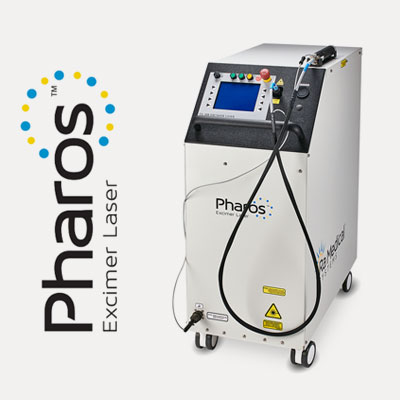What is Vitiligo?
Vitiligo is an acquired disease that causes patients to get white patches on the skin because an overactive immune system starts to destroy the cells that produce pigment. It can affect any part of the body, but is more common on sun exposed areas. It also likes to develop in areas of trauma to the skin such as cuts, scrapes, and burns, including sunburn. Sometimes it makes the hair in affected areas turn white also.
Who gets Vitiligo?
Essentially anyone. It isn’t common, but also isn’t rare since it affects about 1/2-1% of the population.
- It affects men and women equally
- It does not discriminate and affects all races.
- 50% of the time it starts before the age of 20
- 20% of the time there is a family member who has had vitiligo
- It is sometimes associated with other autoimmune diseases, most commonly autoimmune thyroid disease, but sometimes diabetes, rheumatoid arthritis, pernicious anaemia, or alopecia areata (round areas of hair loss)
What causes Vitiligo?
It is most likely a systemic immune disorder, although there are a few competing theories. It is sometimes inherited.
Types of Vitiligo
Vitiligo has been classified into many subtypes, but there are only two that matter
- Nonsegmental (or generalized) vitiligo. This is the most common form (90% of cases). It can begin in childhood, but later onset is more common. It is usually progressive and flares up often. It is often associated with a personal or family history of autoimmunity. It commonly occurs at sites prone to pressure, friction, or trauma.
- Segmental vitiligo tends to develop earlier and accounts for about 30% of childhood cases. It tends to have a rapid onset and then stabilizes. It often involves hair, but is usually not associated with other autoimmune conditions.
How bad will my Vitiligo get?
This is impossible to tell. Some patients may lose all pigment in their entire body. The only pigment that never goes away because of vitiligo is eye color. It is impossible to predict how much pigment will go away.
Vitiligo usually starts rapidly with extensive loss of skin color and then often stabilizes for up to years at a time. It may continue to go through periods of pigment loss and stability forever. In some cases it even goes away.
How is Vitiligo diagnosed?
The diagnosis can be made by appearance alone in almost all cases. A special light called a Wood’s light can help. Biopsies or tests are almost never needed to diagnose vitiligo. Patients with non-segmental vitiligo should have their thyroid checked annually, but other blood tests to look for other autoimmune diseases are only warranted in certain high risk populations or if symptoms suggest these other conditions.
Clinical photographs are useful to document the extent of vitiligo for monitoring.
Treatment for Vitiligo
Phototherapy
The single most effective treatment for non-segmental vitiligo, and the only FDA approved treatment, is phototherapy. The preferred method is narrowband ultraviolet B light. A different type of therapy called PUVA or psoralen + Ultraviolet A used to be commonly used for vitiligo, but narrowband UVB is far more effective. The treatment response is a bit different between adults and kids:
- Adults: After 4 months, 67% of patients start showing repigmentation. After 1 year, nearly 2/3 of patients have about 75% repigmentation.
- Kids: After 1 year, about 50% of patients have 75% repigmentation. Overall, at least 80% showed stabilization of their disease.
It takes 3 months of treatment to know if it will work. Maximal repigmentation usually takes place in 9 months. The face usually responds the best and the hands and feet are the worst responders.
Treatments can be done in a light booth for widespread vitiligo or with the Pharos excimer laser for smaller areas. We offer both treatments:





